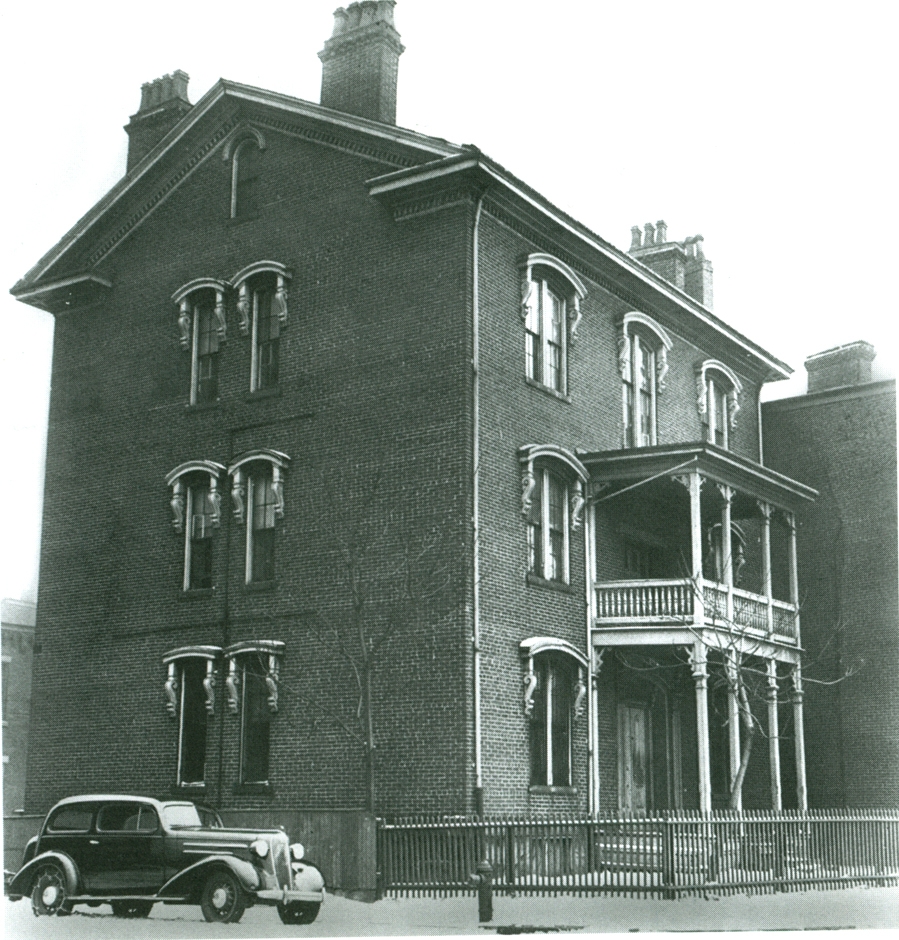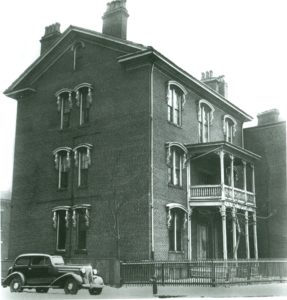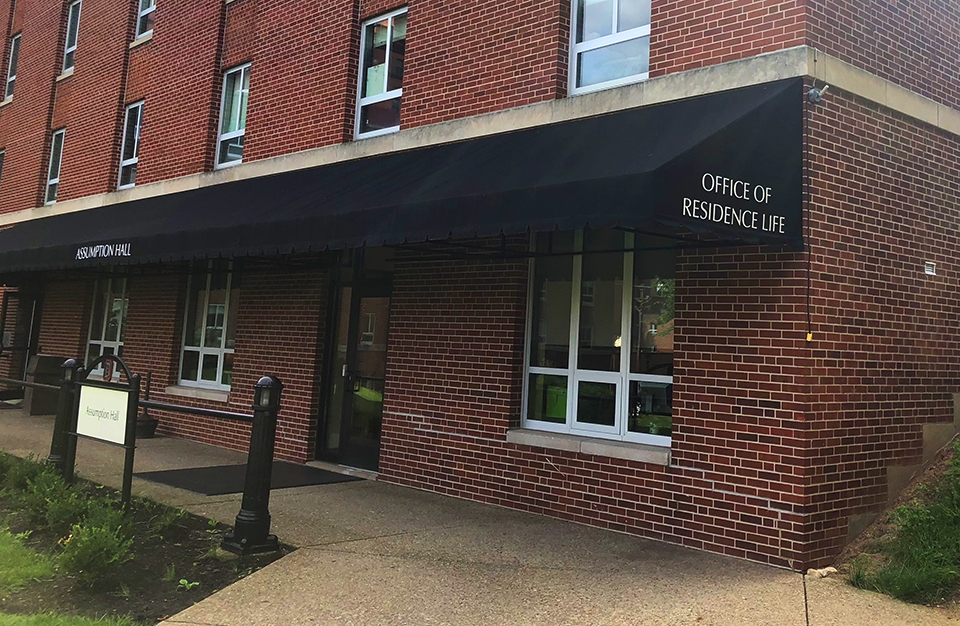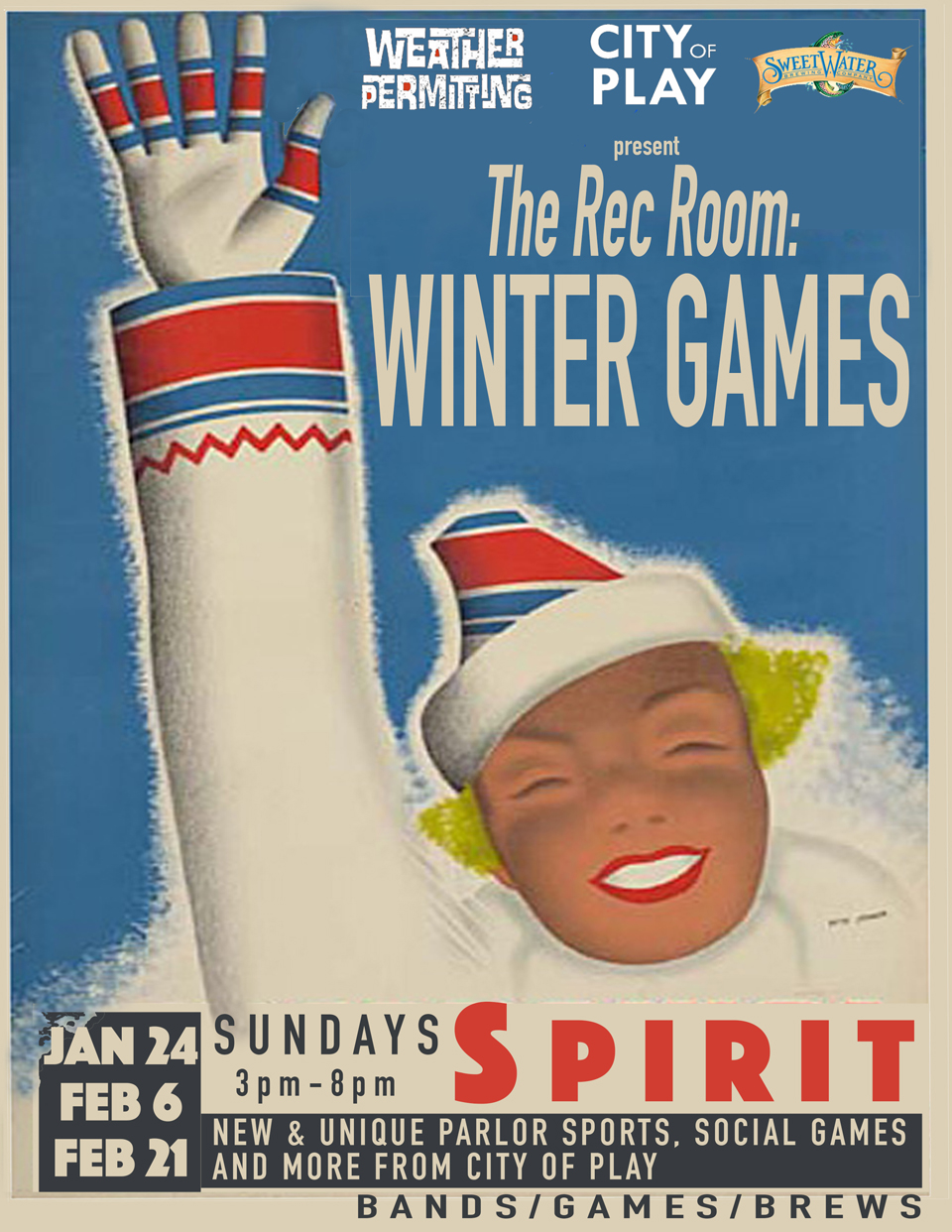

The second location of Dr. Walter’s hospital, now where the Bayer Learning Center calls its home.
By Elsa Buehler | Staff Writer
If you were a slave traveling through Pittsburgh via the Underground Railroad in the mid-1800s, one of your stops may have been at a safe house that once stood on Duquesne’s campus. This February, in the spirit of Black History Month, it seems appropriate to take a look at the history of the land beneath a Duquesne hallmark: Old Main.
Thomas White, Duquesne’s own archivist, adjunct instructor of history and curator of special collections in the Gumberg Library, knows quite a bit about the subject. In fact, according to his biography on Duquesne’s website, White is the award winning author of ten books, including “Legends and Lore of Western Pennsylvania,” which discusses the story of a hospital that once stood on the lot where Old Main now lives.
In his book, White explains that the old, two-story hospital was built by Dr. Albert G. Walter in the mid 19th-century, on the spot where the Old Main administration building stands today. According to White, Walter studied surgery in Europe and began practicing revolutionary procedures that were well ahead of his time, but later became standardized. Because his techniques were modern, he clashed with other local physicians. Ultimately, he opened his hospital on the Bluff, then known as Boyd’s Hill, as well as a private office downtown.
Walter was not only an unsung medical hero, but an abolitionist as well, White said. Oral tradition claims that Walter conveniently employed his hospital as a “station” on the Underground Railroad, taking in and hiding runaway slaves who were headed north in hopes of freedom. Because harboring slaves at that time was, of course, illegal, no records were kept of the slaves that he sheltered. However, it’s generally thought that he aided at least dozens of slaves over the years.
Walter’s hospital was only one of many safe places in the area, according to White. At the time, Pittsburgh was a place where many slaves passed through, arriving via the Monongahela River Valley and seeking passage to the Canadian border.
White also said that Walter continued to run his hospital until his death in 1876. Several years later, in 1882, the Holy Ghost Fathers purchased the property and used it to construct Old Main, the building where they hoped their school, then called Pittsburgh Catholic College, could successfully take root. In addition, they purchased the lot across the street and added a floor to the building already there, which then served as the new hospital. This building was originally known as St. John’s Hall and then, later, St. Mary’s Hall, when it became a residence hall for Duquesne students. White said it was eventually demolished in 1971.
Though little evidence of Walter’s influence remains, several ghost stories involving both the old hospital and the new location, now Bayer Learning Center, have survived on campus.
White said one such oral account tells of an escaped slave who had traveled from the headwaters of the Monongahela River on a rickety, makeshift raft, ending up on a sandbar near the point, where the three rivers of Pittsburgh meet. The bedraggled slave still wore part of his shackles on his arm and an iron collar around his neck. By the time he had arrived he was already badly beaten and very near death; though Dr. Walter tried his best, the slave died of his injuries later that night in the hospital.
A few years after this, Walter began taking in several wounded Confederate prisoners, some of whom he was unable to save. This was common of the time and in the area, White said.
From these two fact-based accounts has emerged a claim that on stormy nights, the escaped slave’s ghost can be heard fighting with the ghost of a dead Confederate soldier, White said. Similar occurrences have been reported numerous times from the bottom floors of Old Main and the basement of Saint Mary’s, while it was still standing.
White said according to an article in a 1940 edition of Duquesne Magazine, there was said to be no trouble if the slave won, yet if the soldier won, there would be misery and woe. How the victory was determined and in what ways the soldier supposedly haunted the students is unknown. Interestingly, this legend was so well known and believed by so many that it became, in a way, an initiation activity for freshmen in the early 1900s. Supposedly, the freshmen would be marched into the basement and told that only those select few that could hear the battle taking place could attend the university. Unfortunately the tradition hasn’t carried on to modern day Orientation Week.




